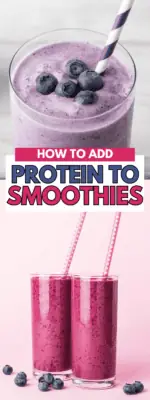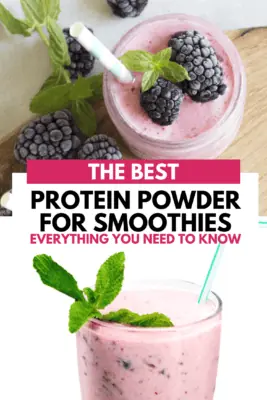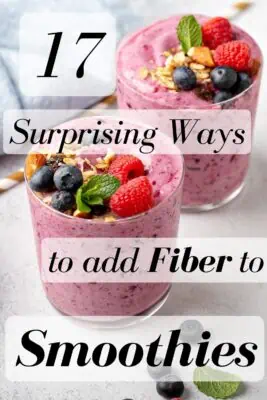How to Add Protein to Smoothies
A simple way to increase the nutritional value of your morning routine, you can add protein to smoothies. Adding protein to smoothies is a great way to make smoothies more filling and feel like a meal. Protein packed smoothies are great for breakfast, lunch or as a pre or post workout snack.
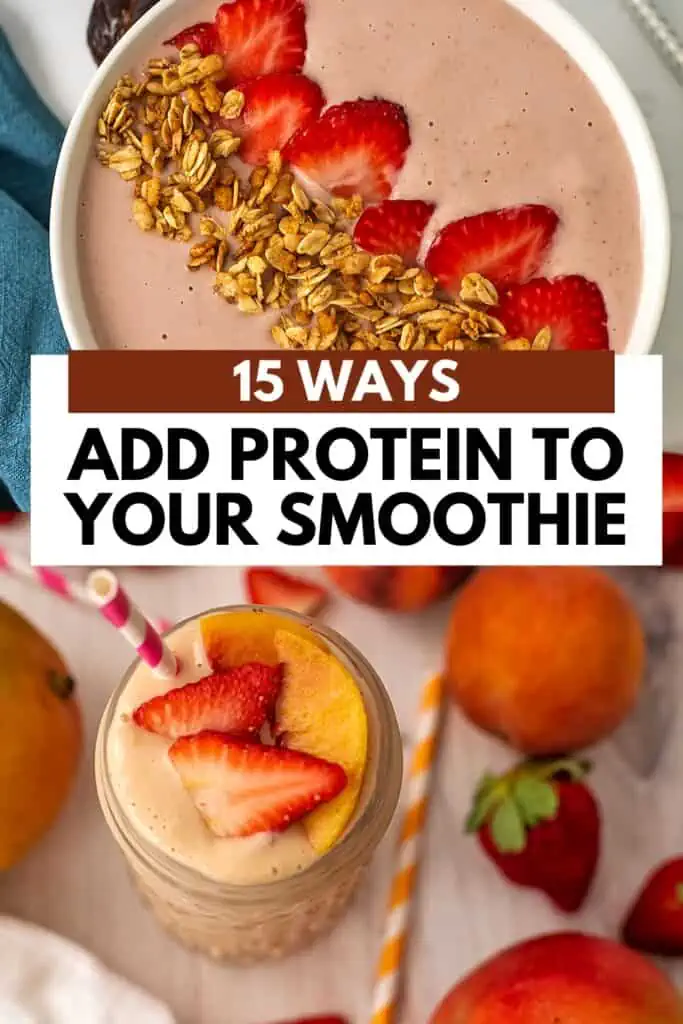
Why you may want to add protein to smoothies
- Makes it more filling – protein is an essential macronutrient (protein, fat and carbs are the main macronutrients). Protein is said to be one of the most satiating macronutrients, meaning that it helps you feel full and satisfied. Adding protein to smoothies is an easy way to help make that morning smoothie keep you full until lunch.
- Balances out the sugars from the fruit – smoothies tend to have a lot of natural sugar from the fruit that is added to naturally sweetened the smoothie. Adding protein (and healthy fats) can help to balance out the blood sugar spike, making the sugars in the smoothie less impactful to your overall blood sugar. If your smoothie is all fruit and no protein or healthy fats, you may notice that you are hungry very quickly after the smoothie or that you have a crash in energy later in the day.
- Increases the calories in the smoothie – having a smoothie with just fruits and milk is very low in calories, which tends to make you feel hungrier later in the day. Adding more calories from protein will not only make the smoothie more filling, but will also make it more satisfying.
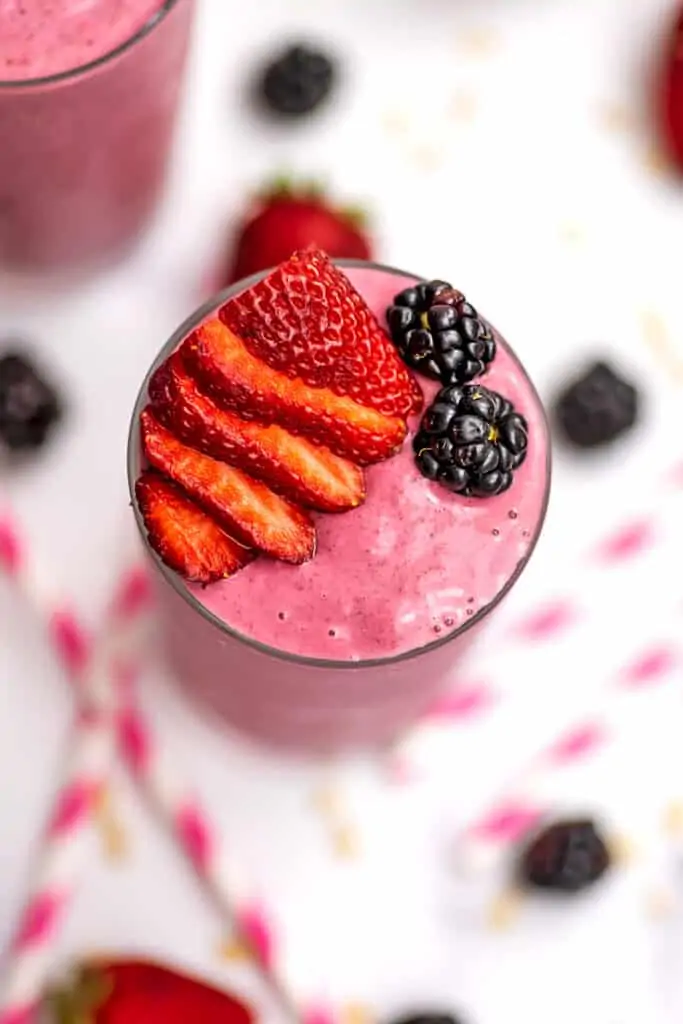
What are the best ways to add protein to smoothies
Although you may think that protein powder is the only way to add protein to smoothies, I’m happy to let you know that it’s not your only option. There are so many ways to add more protein to smoothies, some that may surprise you. Here are my favorites:
Seeds and nuts
- Hemp hearts – hemp hearts are a great way to get protein into smoothies. They are packed with healthy fats and protein. Add 3 tablespoons of hemp hearts for 10 grams of protein.
- Chia seeds – chia seeds help to thicken the smoothie and also provide fiber and calcium. A tablespoon of chia seeds adds 4 grams of protein.
- Walnuts – walnuts add healthy fats and are a great source of potassium and magnesium and add 4.5 grams of protein per ¼ cup of walnuts.
- Peanut butter – peanut butter adds a peanut flavor to the smoothie and is also a source of healthy fats and fiber. Add 2 tablespoons of peanut butter for 7 grams of protein.
- Tahini – tahini is a paste made from ground sesame seeds. You can add 6 grams of protein by adding 2 tablespoons of tahini to the smoothie.
- Almond butter – almond butter is more neutral in flavor than peanut butter and also a great source of healthy fats, fiber and protein. Add 7 grams of protein and 4 grams of fiber with 2 tablespoons of almond butter.
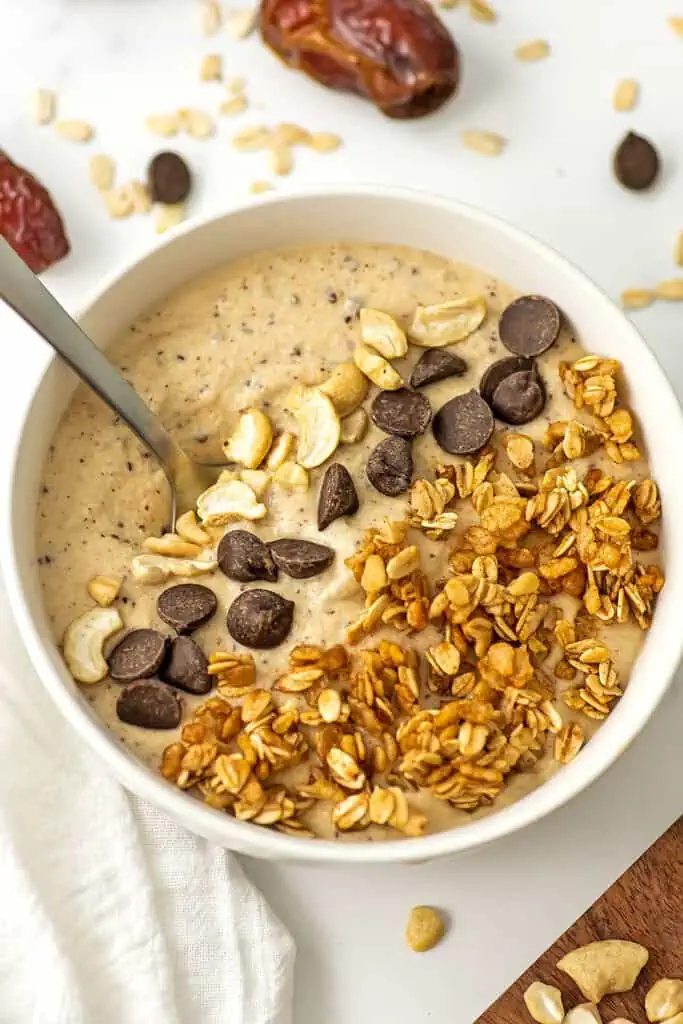
Powders and peptides
- Peanut powder (sometimes called peanut flour) – peanut powder is a great way to add peanut butter flavor to smoothies without the added fat. It’s also a great source of protein, as 3 tablespoons of peanut powder (sometimes called peanut flour) can add 8 grams of protein to your smoothie.
- Almond butter powder – almond butter powder is made by removing the natural oil from the almonds and ground down. The almond butter powder is pretty neutral in flavor but just 2 tablespoons will add 6 grams of protein. This is a really simple way to add protein to any smoothie.
- Protein powder – protein powder is a great way to add protein to any smoothie. There are many different kinds of protein powder you can add to smoothies. Check out all my recommendations for each kind of protein powder. Note that most protein powders on the market have added flavors and sweeteners, so protein powder is a great way to add sweetness to smoothies as well.
- Collagen peptides – collagen peptides are unflavored and a great way to add protein to smoothies. Depending on the brand, a scoop of collagen peptides can add about 10-12 grams of protein.
Grains and other options
- Oatmeal – adding oats to smoothies can make them so thick and creamy and ½ cup of rolled oats adds about 6 grams of protein to the smoothie.
- Cooked quinoa – quinoa is a seed (not a grain) and is a great way to get in fiber and protein. A cup of cooked quinoa adds about 8 grams of protein and adds a slight nutty flavor to the smoothie.
- Cooked black beans or white beans – beans are pretty tasteless and add fiber and protein to the smoothies. Add ½ cup of cooked black beans (or white beans like cannellini beans, navy beans, or great northern white beans) add 7 grams of protein and can help thicken the smoothie.
- Greek style yogurt – Greek yogurt is a great way to make smoothies creamy and add so much protein to the smoothie. A cup of Greek yogurt adds 22.7 grams of protein. For a vegan Greek style yogurt, 1 container of Kite Hill Greek style yogurt adds 11 grams of protein.
- Cottage cheese – cottage cheese is making a comeback and for good reason. It’s easy to find and blends up super smooth. Adding just 1/2 cup of cottage cheese to your smoothie adds 12 grams of protein.
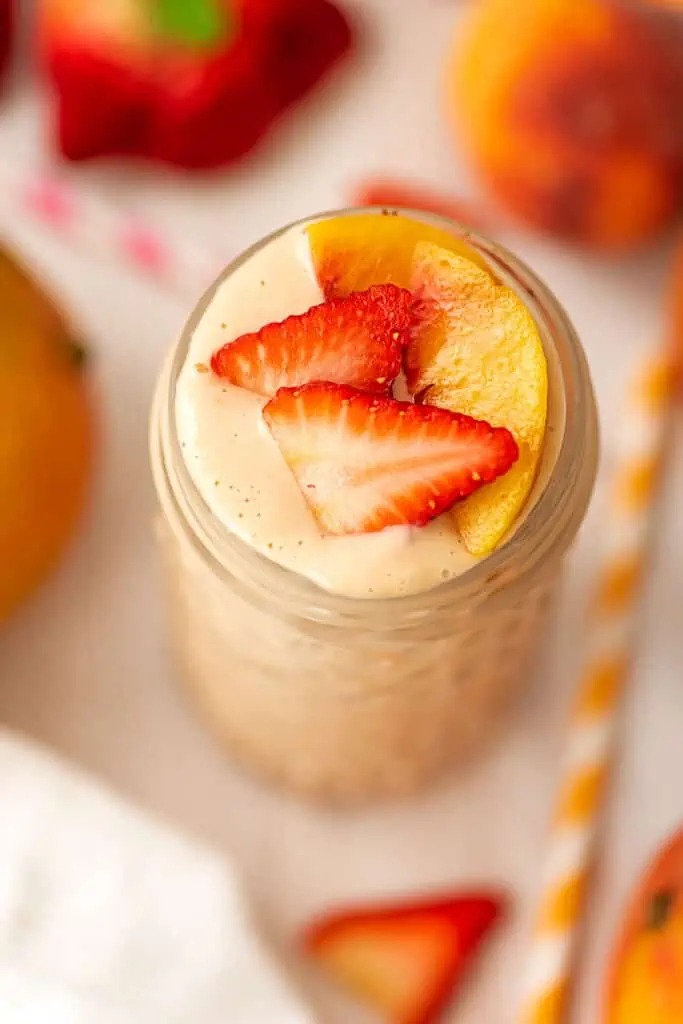
Things to consider when adding protein to smoothies
- Additional sweetener may be needed – Many of these additional protein sources can make the smoothie taste less sweet. By adding in any of these protein sources, you many need to add some additional sweetener like maple syrup, honey, pitted dates, bananas or dried figs or raisins.
- More liquid may be needed – some of these protein sources will absorb some of the liquid in the smoothies, which will make the smoothie thicker, especially the rolled oats, powders (like peanut powder, almond powder, protein powder), chia seeds, quinoa or beans. Once you blend the smoothie, you may need to add more liquid (water, milk, dairy free milk) to create the same consistency.
- These protein sources may also a great source of fiber – Many of these protein sources are also a great source of fiber. Fiber can also help to make the smoothies more filling. To find more ways to add fiber to smoothies, be sure to check out 10 ways to add fiber to any smoothie.

